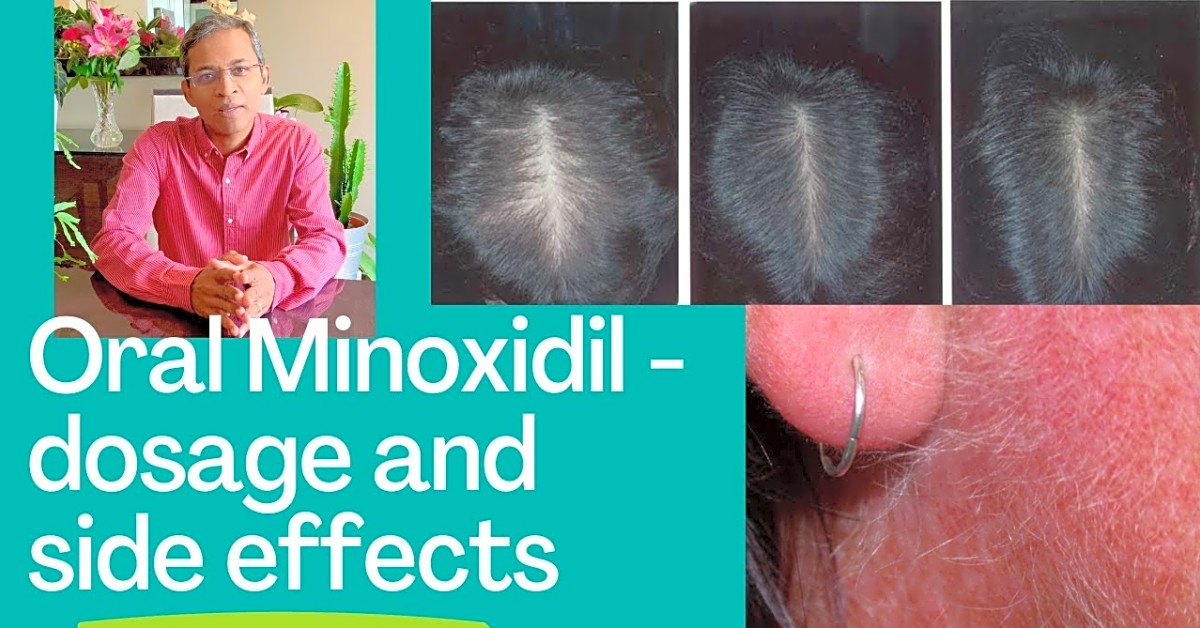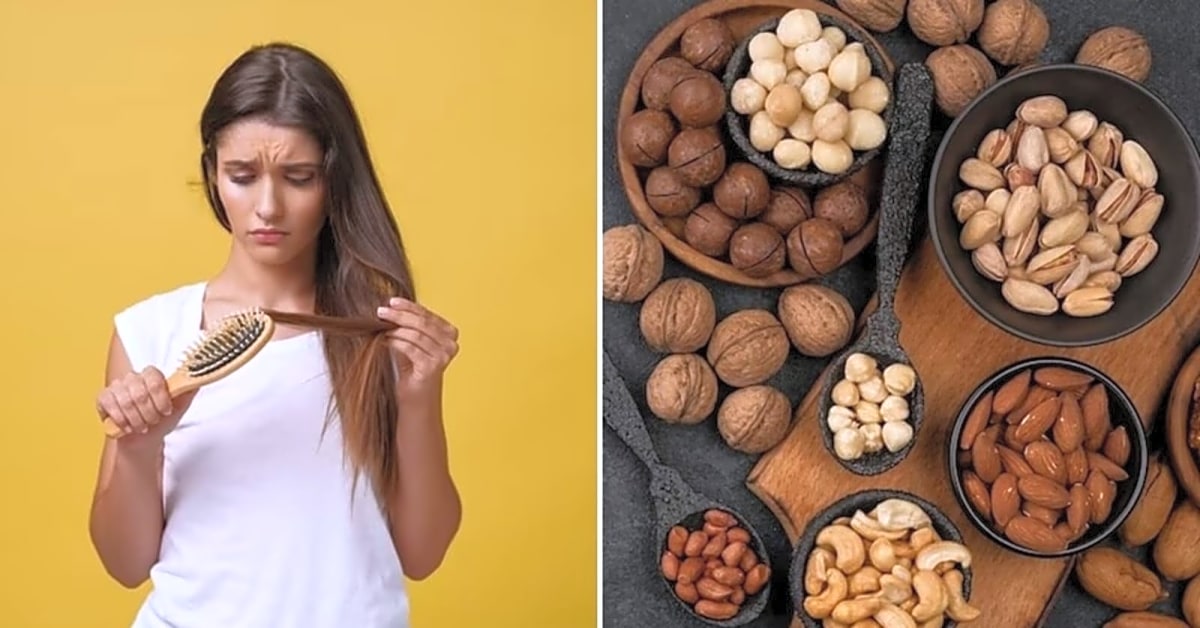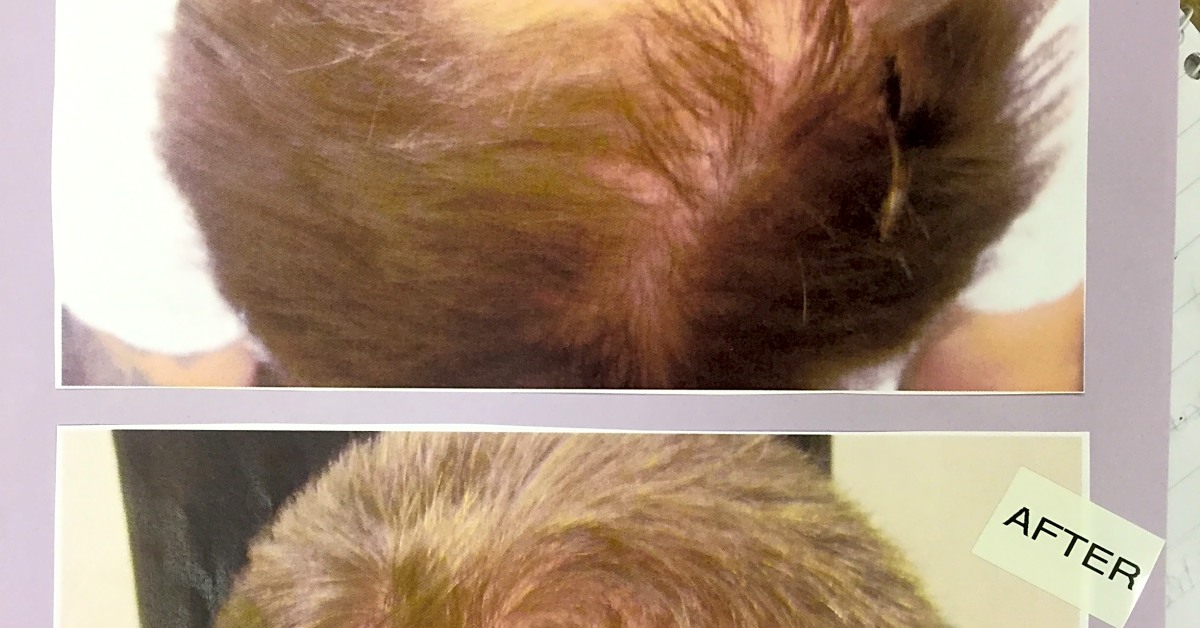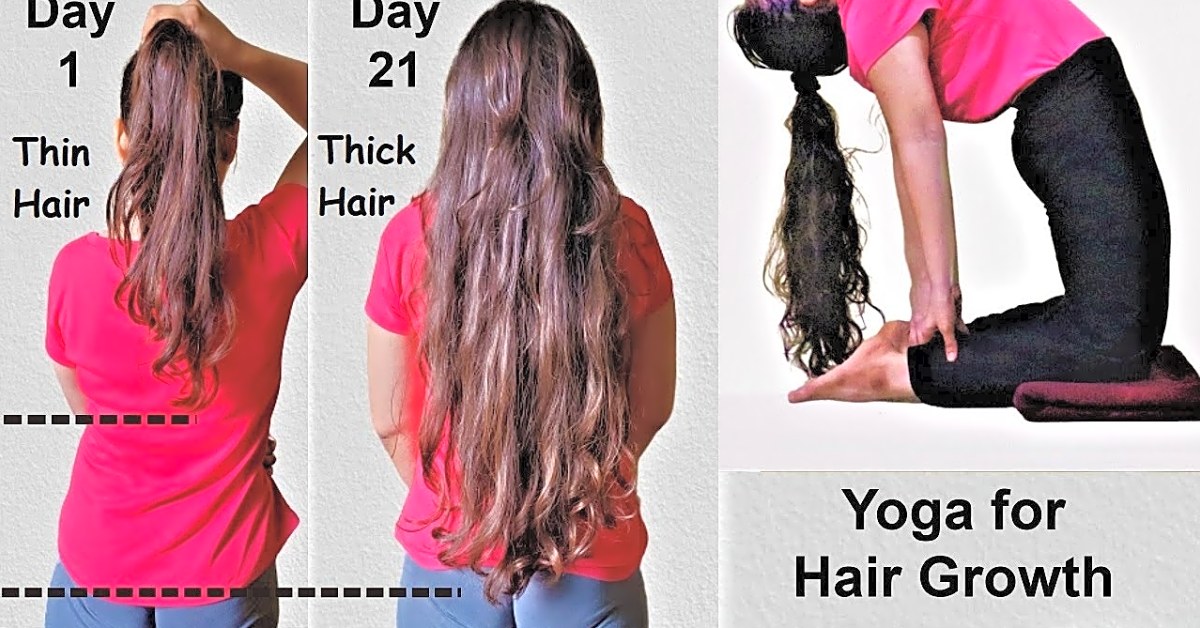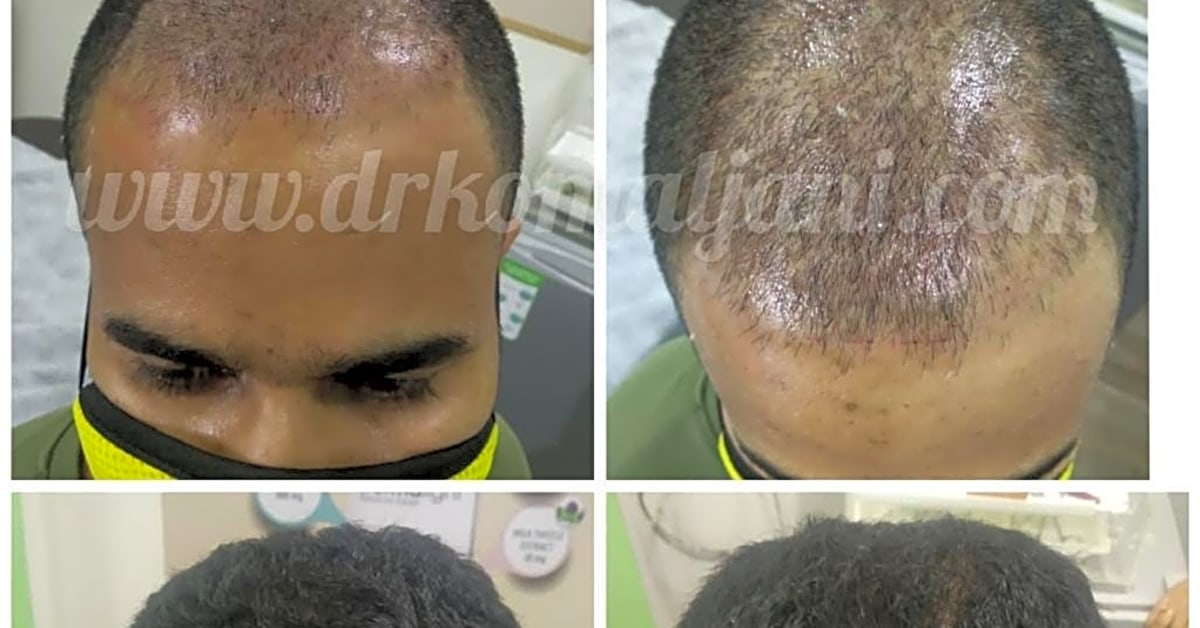Newer treatment options such as platelet-rich plasma, weak laser light, and microneedling have become available; however, their costs and effectiveness, which have yet to be confirmed, have limited their use in most patients. So far, the FDA has only approved minoxidil for AGA. Hair growth was noticed earlier and became denser at the treated area, but minor to no effects were observed in patients with extensive AA. More studies are needed to examine the effectiveness of OM for other types of alopecia and to compare its use as monotherapy or adjunctive therapy with other commonly used medications for
these conditions.
To date, topical minoxidil is the main treatment for androgenetic alopecia and is used as an off-label treatment for other hair loss conditions. Minoxidil is a potent arteriolar vasodilator that opens potassium channels in the smooth muscles of the peripheral artery and causes hyperpolarization of the cell membrane. Minoxidil can stimulate the release of vascular endothelial growth factors and activate the β-catenin signaling pathway. Although topical minoxidil is considered to be an effective and safe treatment option for various hair conditions
, are some applications require additional evidence-based data.
Minoxidil solution and foam are used to support hair growth in treating hair loss in men. Clinical trials involving AGA patients treated with 2% or 5% MS showed a remarkable increase in hair growth and a reduction in hair loss, and the 5% formulation had outstanding results. It provides remarkable benefits for patients with hair conditions. Minoxidil is a common medication that is prescribed to treat problems associated with hair loss
.
However, minoxidil is used over the counter to treat various hair conditions as well as to increase body hair growth. The foam and 2 percent minoxidil solution are also used to support hair growth in women with thinning hair. It is not used for balding on the front of the scalp or receding hairline in men. Because of its vasodilator properties, the use of minoxidil was started in the 1970s to treat
severe refractory hypertension.
Attempts have been made to use oral minoxidil in AGA or FPHL patients who were not satisfied with conventional treatment.
Can Minoxidil regrow hair?
Although the exact mechanism of action of minoxidil is not yet fully understood, the treatment is a vasodilator, meaning it dilates blood vessels to deliver more oxygen-rich blood to the hair follicles. The obvious advantage of Minoxidil is that a large percentage of patients experience positive results and increased hair growth after consistent use of the ingredient. Minoxidil is applied directly to dry scalp twice a day. For women, use is sometimes only required once a day. The results of the study showed that the minoxidil group had a significantly greater increase in the number of non-Vellus hairs at week 16 compared to the placebo group. Although the exact mechanism of action of minoxidil is not yet fully understood, the treatment is a vasodilator effect, meaning it dilates blood vessels to deliver more oxygen-rich blood to the hair follicles
.
The results of the study showed that the minoxidil group had a significantly greater increase in the number of non-Vellus hairs at week 16 than the placebo group. If you’re at an earlier stage of hair loss, minoxidil can help your hair grow back and slow down further hair loss. Unfortunately, the effects on hair growth caused by minoxidil gradually decrease when you stop taking the ingredient. Participants were randomly assigned to receive either 5 percent minoxidil foam or a placebo foam for 16 weeks. In the case of Minoxidil, you don’t have to spend a fortune to see thicker, denser hair
with increased growth.
Originally tested in the 1960s as an oral medication to treat high blood pressure, minoxidil was found to increase hair growth in some patients. The publication “How Minoxidil was Transformed from an Antihypertensive to Hair Loss Drug,” published in the Pharmaceutical Journal, dives deeper into the drug’s unique past. But not all hope is lost if you want to try minoxidil, but your hair loss isn’t androgenetic alopecia because it’s sometimes used off-label by dermatologists to treat other hair loss conditions, Belmo adds. Other products that contain the ingredient have minoxidil on the front and center on
listed in the product packaging.
Minoxidil is an active ingredient that you’ve probably sold under the name Rogaine often along with individual treatments for men and women that are used to treat hair loss. It certainly takes some work to introduce Minoxidil into your hair routine, but when it comes to getting results, many people find it’s worth the effort. It is important to note that Minoxidil stains clothing and bedding. So be careful if you’re planning on wearing your new favorite outfit or sleeping on expensive bedding. In addition, at week 16, the minoxidil group showed a significantly greater improvement in global photographic assessment and patients’ self-assessment results compared to the placebo group
on.
Is minoxidil okay for men?
Women are advised to use minoxidil at a low level (2%), while men can use the highly effective alternative (5%). Minoxidil is applied to the scalp to stimulate hair growth in adult men and women with a specific type of baldness. If scalp irritation is a problem, you may need to avoid using Minoxidil on the same days that you have your hair dyed or chemically treated (such as a perm). The FDA has approved the use of 5% minoxidil in foam form for women, but the jury is still out on the 5% minoxidil
solution.
Minoxidil and finasteride (Proscar and Propecia), another medication to prevent hair loss, are the only drugs approved by the Food and Drug Administration (FDA) to treat hair loss in men. Anyone taking prescription or over-the-counter medications or supplements should talk to a doctor or pharmacist to make sure that using Minoxidil is safe for them. Scientists originally developed Minoxidil to treat high blood pressure, and doctors can continue to prescribe the oral form of the drug to people with severe high blood pressure. If the minoxidil comes into contact with the eyes or skin, a person should wash the area with cool water
.
A person should see their doctor if they experience an itchy, dry, scaly, irritated, or burning scalp after using Minoxidil. Using Minoxidil with other vasodilators, such as blood pressure medications or erectile dysfunction medications, can be dangerous. If you experience a burning sensation, redness, and irritation that doesn’t go away, switch to 5% minoxidil foam or 2% minoxidil solution to prevent further complications. However, a person should tell their doctor or pharmacist of any other prescription or over-the-counter medications they are taking before buying minoxidil
.
In 1987, scientists developed a topical Minoxidil solution that is suitable for treating hair loss in both men and women. It is not found in the other forms of minoxidil, which is why the 5 percent minoxidil solution is more effective than the 2 percent formulation. Minoxidil, Rogaine’s main active ingredient, has been available on the hair loss market for more than three decades, since the 2 percent formula was introduced in 1986. Women are advised to use minoxidil at a low level (2%), while men can use the highly effective alternative (5%). Minoxidil, Rogaine’s main active ingredient, has been available on the hair loss market for more than three decades, since the 2 percent formula was introduced in 1986. To predict the outcome of certain treatments, it’s important to know the cause of your hair loss. Otherwise, just delay your hair loss by using Minoxidil
.
Can I buy minoxidil over the counter in the USA?
Minoxidil is an over-the-counter hair loss treatment, which means you don’t need a prescription to get it. Minoxidil is a vasodilator, a drug that dilates blood vessels and allows blood to flow through them more easily (in fact, it is sometimes used to treat high blood pressure). Although minoxidil is generally safe, like all medicines, it is associated with rare but serious side effects. The foam version doesn’t contain propylene glycol, so you still get all the benefits
of Minoxidil without may take advantage of these side effects.
Clinical trials of Minoxidil focused primarily on regrowing hair at the crown, but some data shows that it may also help your hairline and hair around your temples. No, minoxidil is an effective hair loss treatment, but it doesn’t work by blocking DHT (the hormone that causes baldness in men). Minoxidil is one of just two FDA-approved treatments to treat hair loss and help hair regrowth (the other treatment is finasteride). Minoxidil causes this hair to fall out and replaces it with healthy hair in the anagen phase, a phase of active growth
.
It is believed that when you apply Minoxidil to your scalp, it allows your blood vessels to transport more oxygen and nutrients to your hair follicles, which stimulates hair growth.

